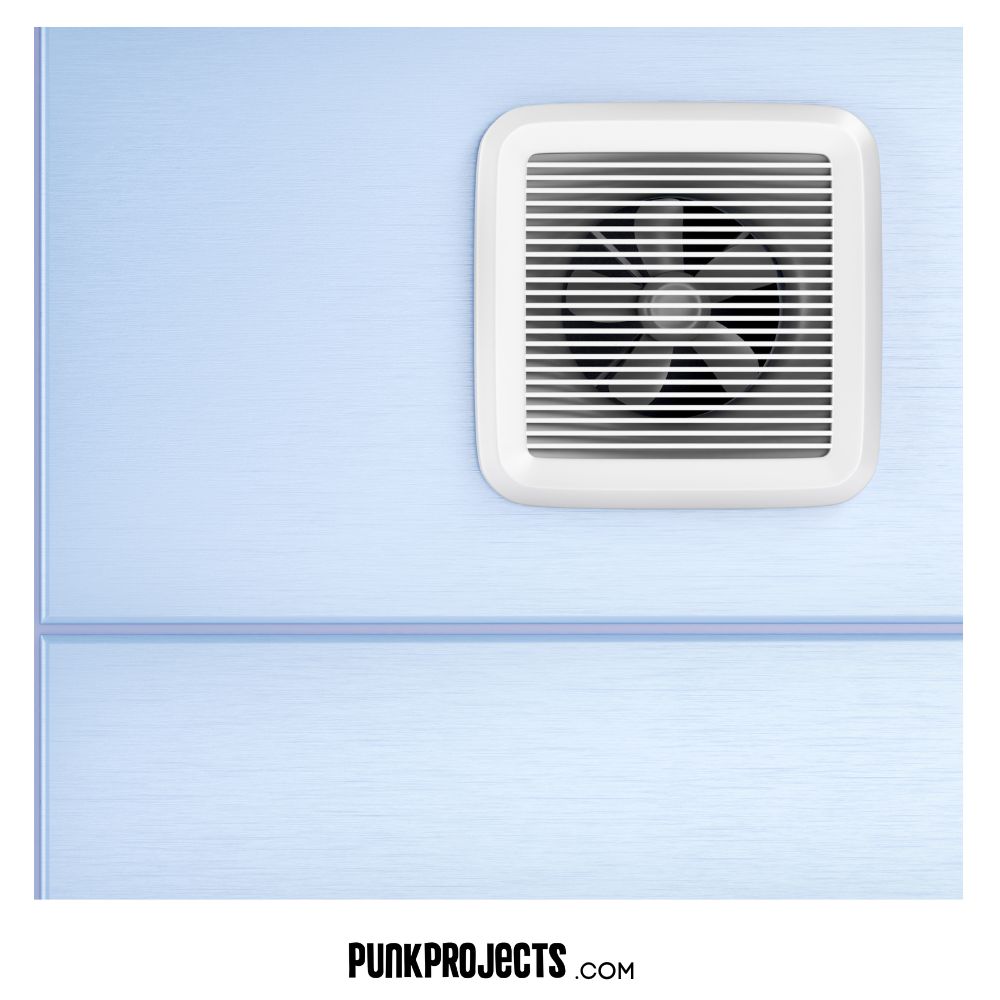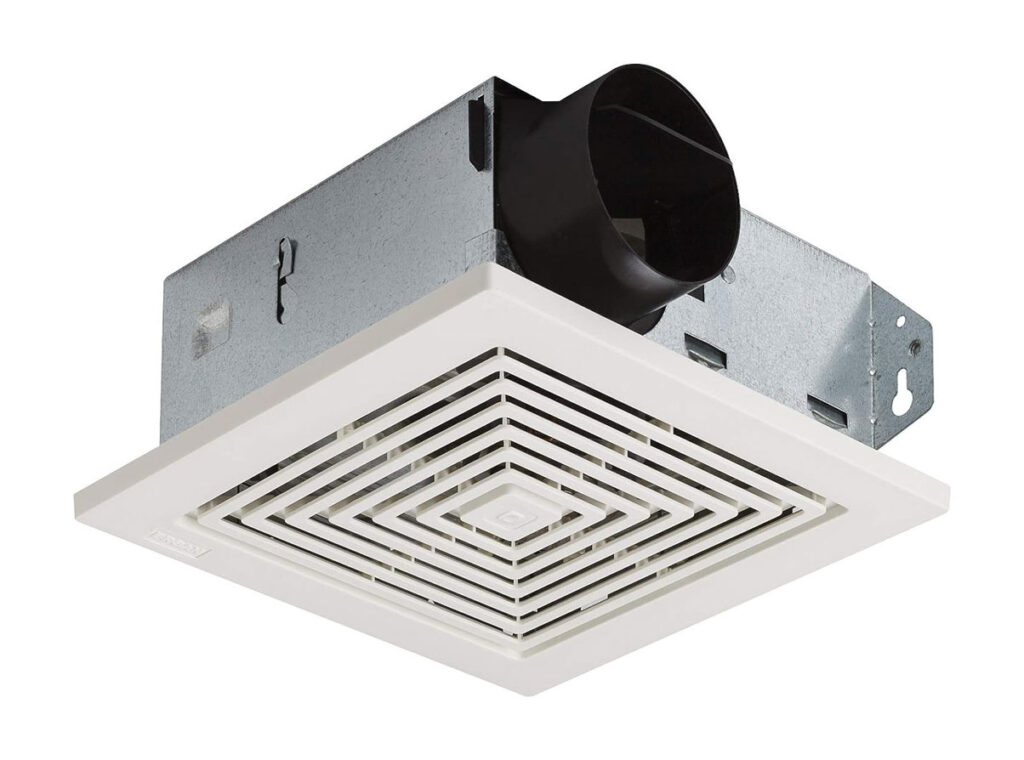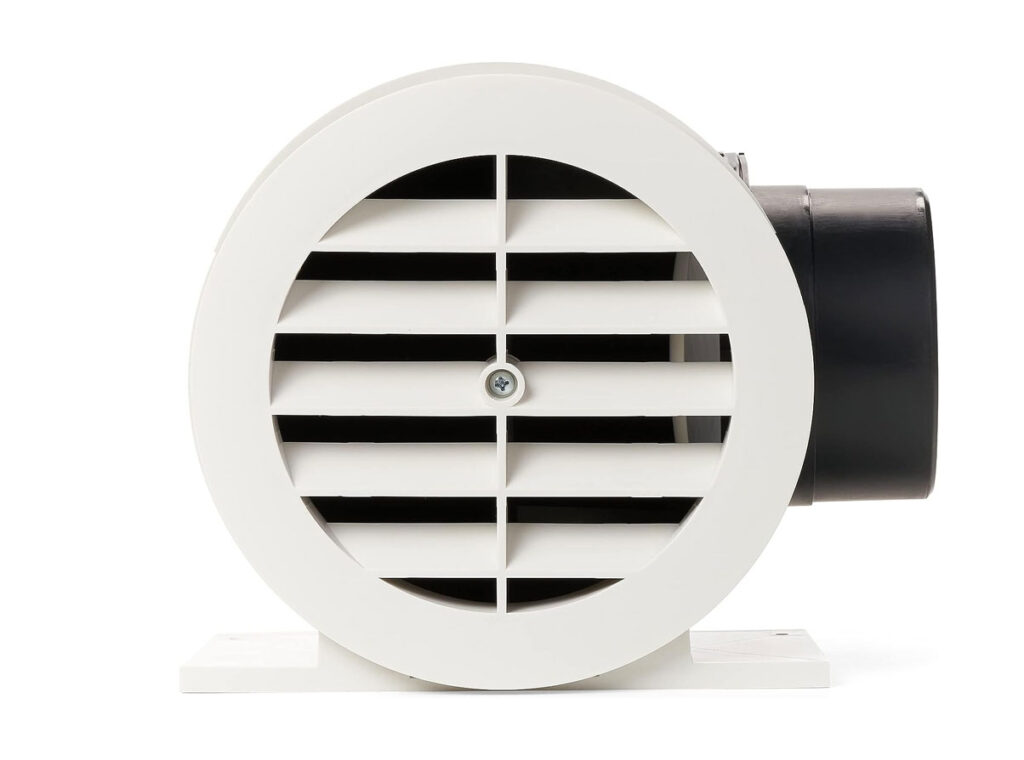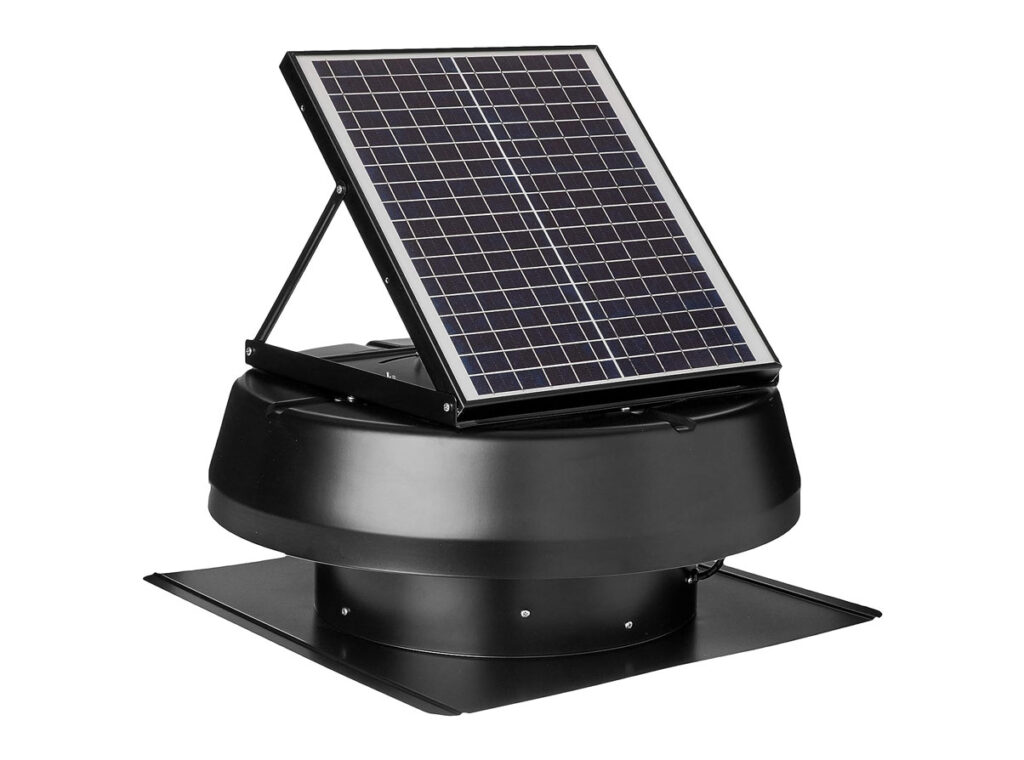Lookinf for Bathroom Exhaust Fan Venting Options? When it comes to bathroom exhaust fans, proper venting is crucial for maintaining good air quality and preventing damage to your home. There are several options available for venting your bathroom exhaust fan, each with its own advantages and considerations.
Here is more detailed explanation on bathroom exhaust fan venting options you can use as you construction guide!
Importance of Proper Ventilation in Bathrooms

Proper ventilation is essential in bathrooms. It helps get rid of moisture, stops mold & mildew, eliminates bad odors, and improves air quality.
An exhaust fan is one way to provide ventilation. Pick one that fits the size of your bathroom & the level of ventilation you need. Windows can also work, but they’re not always an option.
Venting your exhaust fan directly outside is key for it to work correctly. Don’t vent it into an attic or crawlspace. That will just circulate the moisture & odors back into your home. Check also: How To Get Rid of Ants in Bathroom.
Types of Bathroom Exhaust Fan Venting Options

Let’s discover the various types of Bathroom Exhaust Fan Venting Options you can use as guide before buying one!
1. Wall Ventilation

One advantage of wall ventilation as a bathroom exhaust fan venting option is its simplicity and ease of installation. With proper tools and equipment, homeowners can easily create an opening on an exterior wall to accommodate the exhaust fan. The ventilation duct can be connected directly to the exterior, ensuring that moisture and odors are effectively expelled outside the building.
Furthermore, this bathroom exhaust fan venting options offers flexibility in terms of placement. Homeowners have the freedom to choose where they want to install their exhaust fans based on their bathroom layout and preferences.
2. Ceiling Ventilation

Ceiling ventilation can be an excellent choice for expelling the moist air from your bathroom, ensuring proper airflow and preventing mold and mildew growth.
One advantage of using ceiling ventilation as a bathroom exhaust fan venting option is its ability to provide even distribution of fresh air throughout the entire space. By installing the exhaust fan in the ceiling, it can effectively remove the steam and odors that tend to rise towards the top of the room. This ensures that all corners of your bathroom receive adequate ventilation, leaving no area vulnerable to dampness or unpleasant smells.
3. Soffit Ventilation

Soffit vents are installed on the underside of the eave, allowing for efficient air flow and proper ventilation. This option is particularly advantageous for homeowners who want to maintain a clean and aesthetically pleasing exterior without compromising on functionality.
One of the main advantages of using soffit ventilation for your bathroom exhaust fan is its ability to effectively remove moisture from the room. The moist air produced during showers or baths can lead to mold and mildew growth if not properly ventilated.
By venting through the soffit, you ensure that this excess moisture is expelled outside, preventing potential damage to your walls or ceiling.
4. Roof Ventilation

Installing a roof vent can offer numerous advantages. Firstly, a roof vent allows for better air circulation and ventilation, preventing the build-up of moisture and mold in your bathroom. By exhausting humid air directly outside through the roof, you can maintain a healthier indoor environment while minimizing the risk of water damage to your walls or ceiling.
Another benefit of choosing roof ventilation for your bathroom exhaust fan is its aesthetic appeal. Unlike wall-mounted vents that may disrupt the exterior design of your home or soffit vents that may not be visually appealing, roof vents blend seamlessly into the overall architecture of your house.
Considerations for Choosing the Right Venting Option

Choosing the right bathroom exhaust fan venting option is a big decision. Keep these factors in mind to make the best choice:
| Factor | Description |
|---|---|
| 1. Duct Length | Length of duct from fan to outside affects air exhaustion. Longer ducts can need more power and reduce airflow. |
| 2. Duct Size | Size of duct should match fan’s airflow capacity. Too small can cause backpressure and poor performance. |
| 3. Ventilation Type | Options include wall-mounted, roof-mounted, and soffit vents. Consider what works best with your bathroom layout and exterior structure. |
| 4. Airflow Direction | Choose between directly outside or filtered/recirculated air indoors. |
| 5. Noise Level | Some venting may be louder than others. Look for quiet options that don’t sacrifice performance. |
By taking these elements into account, you’ll be able to select a venting option that works for you. It’ll ensure proper air circulation and minimal noise. Check also: Replace Rubber Seal Around Shower Glass.
Installation Process for Each Venting Option

The installing of each bathroom exhaust fan venting options differs based on which method you select. To assist you with the installation process, here is a step-by-step guide:
- Through the Roof Venting:
- Pinpoint desired spot for the vent on the roof.
- Cut a hole with a reciprocating saw for the vent to fit through.
- Use screws or clamps to attach the vent pipe to the exhaust fan.
- Securely fasten the vent cap to avoid water entering your home.
- Wall Venting:
- Select an exterior wall for the vent.
- Cut an opening which matches the diameter of your chosen venting system, using a hole saw or reciprocating saw.
- Connect the vent pipe to the back of your bathroom exhaust fan and secure it.
- Put a weatherproof wall cap over the opening to protect it from external elements.
- Soffit Venting:
- Find a place on your soffit for the vent.
- Cut through both layers of soffit material according to the size needed for your selected vent type.
- Securely attach the vent pipe to your bathroom fan’s ductwork.
- Install a soffit cap on top of the ventilation opening.
- Window Venting:
- Pick a window close to your bathroom.
- Measure and cut an appropriate-sized piece of plywood or similar material that fits into your window frame, leaving a small gap at one end.
- Connect a flexible duct to the gap, linking it to your bathroom exhaust fan outlet.
- Fit the plywood in place, allowing enough room for air to flow through.
It’s also important to keep in mind local building codes, proper sealing techniques and maintain/clean the vents for optimal performance and longevity.
By following these actions, you can select and install the most suitable venting option for your bathroom exhaust fan. Enjoy the advantages of a well-ventilated bathroom – take action now to create a more pleasant and clean atmosphere for yourself and your family. Read Also : Best Through the Wall Exhaust Fan
Common Mistakes to Avoid

To avoid costly and frustrating mistakes when venting your bathroom exhaust fan, be sure to avoid these common pitfalls:
- Installing the vent pipe too long or with too many turns, which restricts airflow.
- Using flexible ducts, as dust and debris can build up over time.
- Neglecting to insulate the vent pipe, which can lead to condensation issues and mold growth.
- Blocking the vent exit, which impedes airflow and can cause backdrafting.
- Forgetting to clean your exhaust fan and vent system, which can reduce its efficiency.
- Not checking local building codes, which can lead to penalties or problems when selling your property.
Also, keep the vent exit area clear and regularly clean and maintain your vent system.
To maximize your bathroom exhaust fan’s efficiency, consider:
- Increasing the size of the vent pipe for better airflow.
- Installing a fan with a higher CFM rating.
- Positioning the vent outlet on an exterior wall or roof away from windows and air intakes.
- Installing a backdraft damper to prevent outside air from entering the vent system.
By taking these measures, you can ensure that your bathroom exhaust fan operates optimally and keeps your bathroom well-ventilated. Check also: Tile Redi Shower Pan Problems.
Maintenance and Troubleshooting Tips

Here is some tips on taking care you bathroom exhaust fan venting options:
- Regularly clean the exhaust fan to avoid dust buildup – it can reduce its effectiveness.
- Check if the fan blades are spinning freely. If not, lubricate the motor for smooth operation.
- Monitor for any strange noises, which could mean a loose part or a damaged motor.
- Inspect the venting system to ensure no blockages or obstacles that limit air flow.
- Test the fan’s performance by switching it on and confirming it removes moisture from the bathroom.
- If problems persist, call in an expert for an inspection and repair.
Remember: proper maintenance and troubleshooting lengthens the life of your bathroom exhaust fan and ensures optimal performance. Follow these tips to prevent problems and keep your bathroom humidity-free.
What are the different bathroom exhaust fan venting options?
There are three main venting options for bathroom exhaust fans: through the roof, through the wall, and through the soffit. Each option has its own advantages and considerations.
Can I vent my bathroom exhaust fan through the roof?
Yes, venting through the roof is a common option. It requires a duct to be installed from the fan through the attic and out the roof. Make sure to properly seal the roof penetration to prevent leaks.
Is it possible to vent a bathroom exhaust fan through the wall?
Absolutely! Venting through the wall is another popular option. It involves running a duct from the fan through an exterior wall. This method requires careful planning to avoid obstacles and maintain proper ventilation.
What is venting a bathroom exhaust fan through the soffit?
Venting through the soffit means running a duct from the fan to the soffit area, which is the underside of the roof overhang. This option is convenient if your bathroom is located on an outer wall with a soffit nearby. However, beware of moisture buildup in the soffit area.
Can I install a bathroom exhaust fan without an external vent?
While it is possible to install a fan without an external vent using a ductless exhaust fan, it is not recommended. Ductless fans filter the air but do not effectively remove moisture or odors. Proper ventilation is crucial for maintaining a healthy bathroom environment.
I am a multi-talented designer and contractor with over 10 years of experience in the field. I have a passion for creating beautiful, innovative spaces that reflect my clients’ needs and styles. My skills include architectural design, interior design, space planning, project management and construction supervision.






